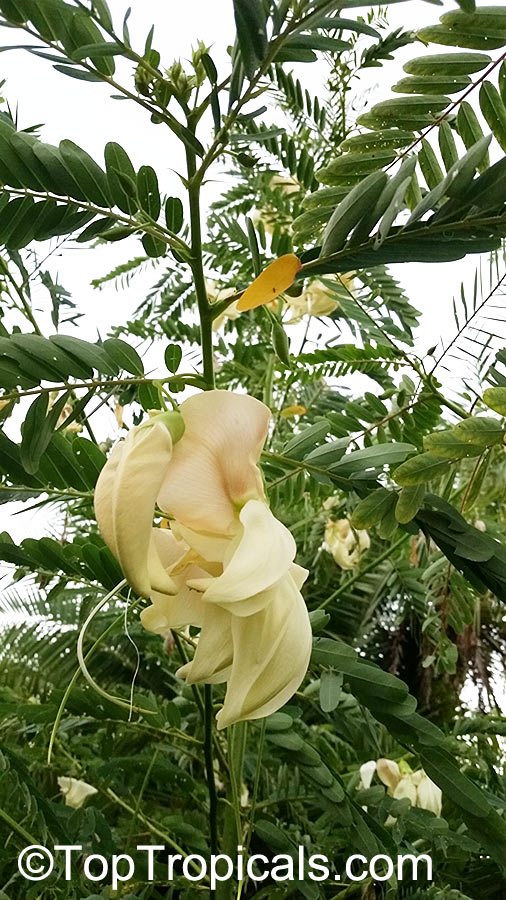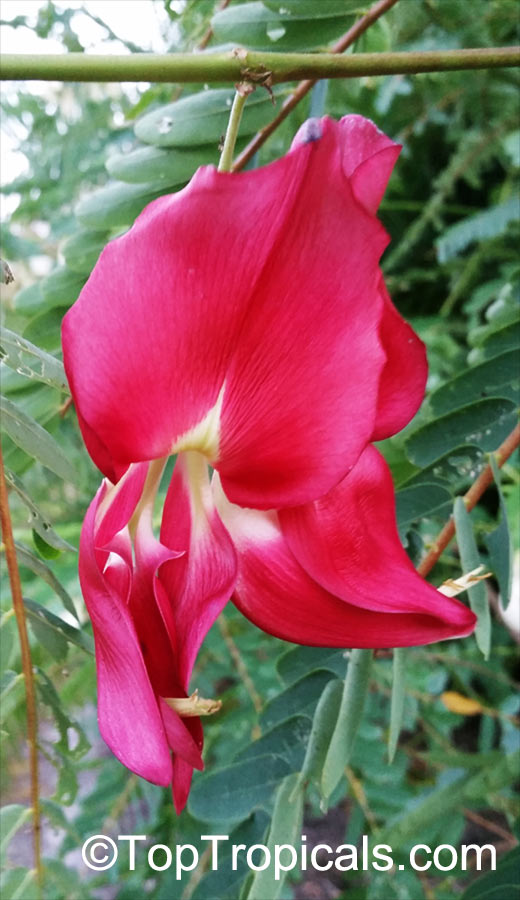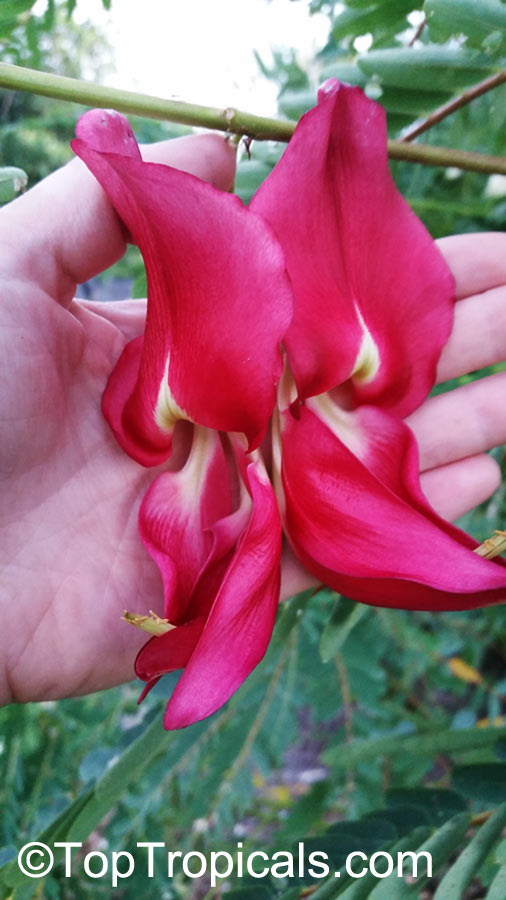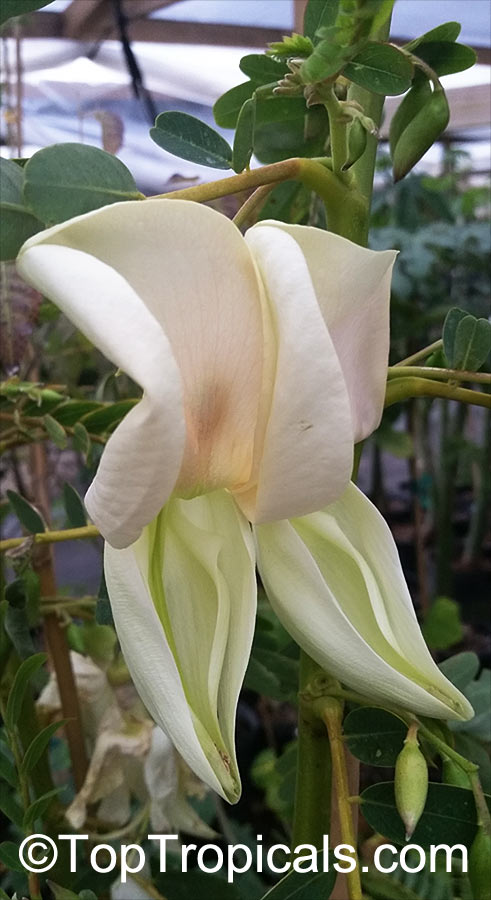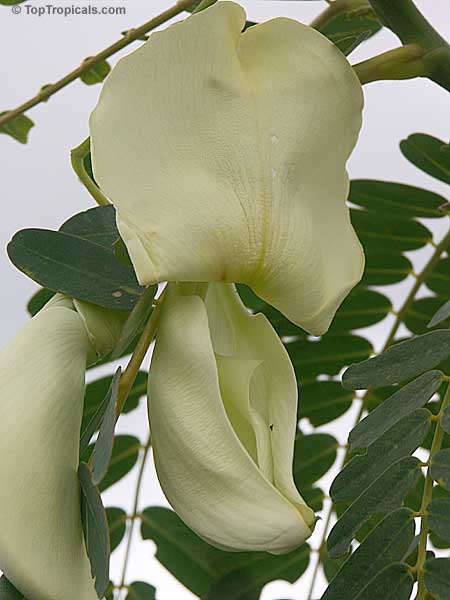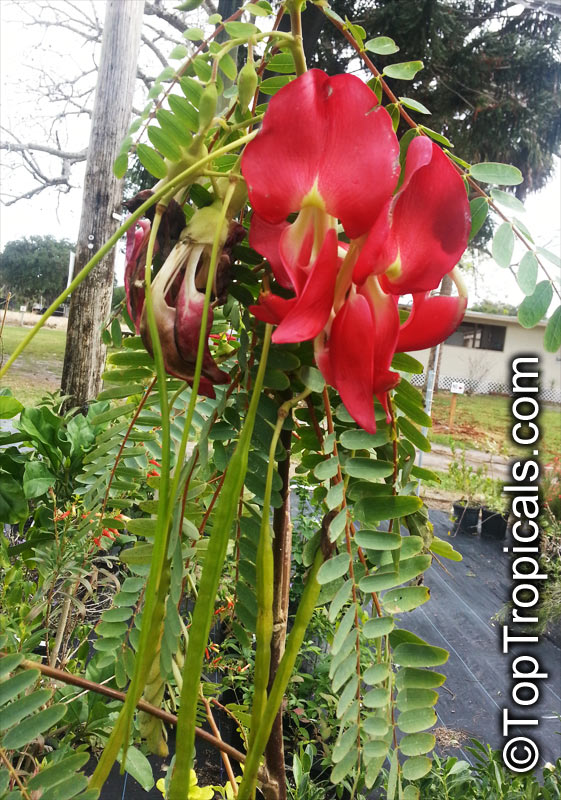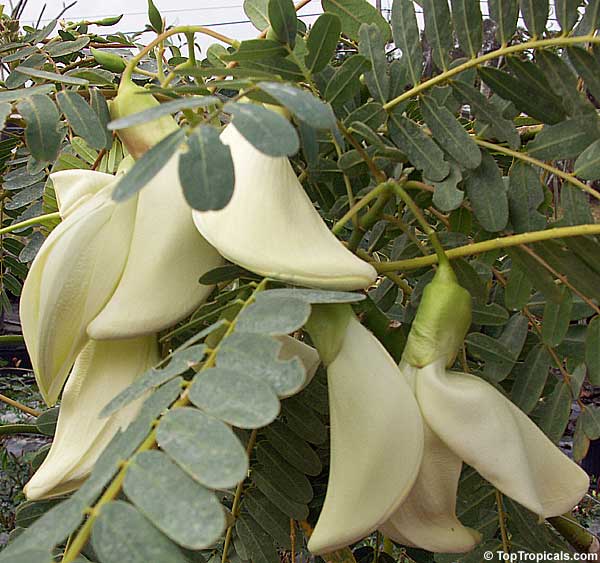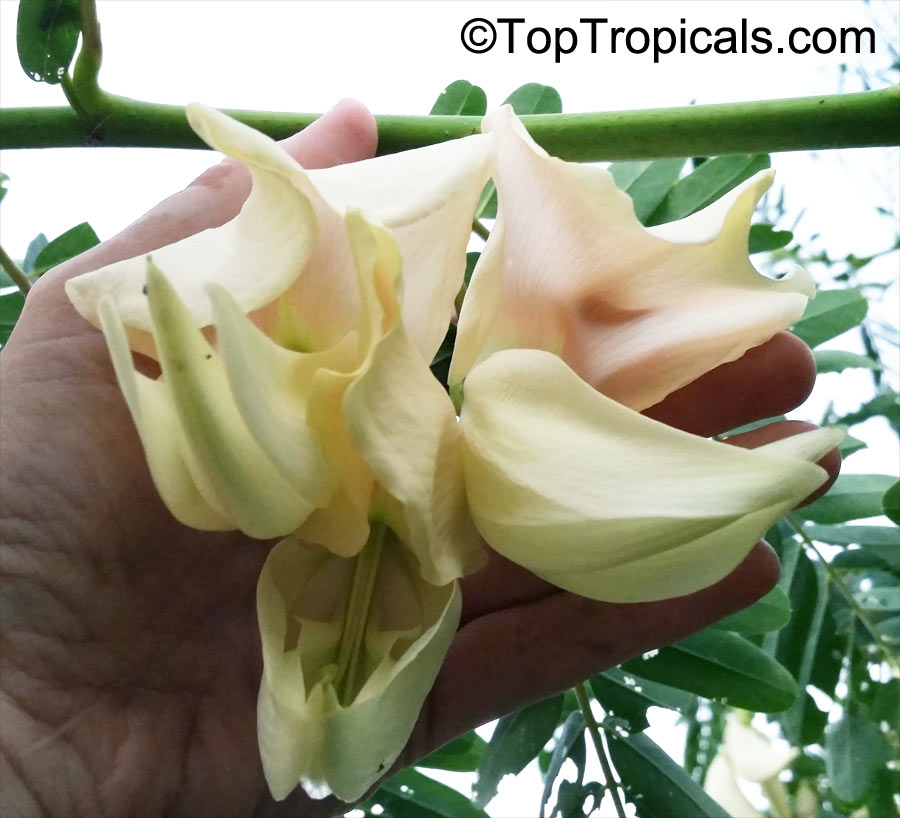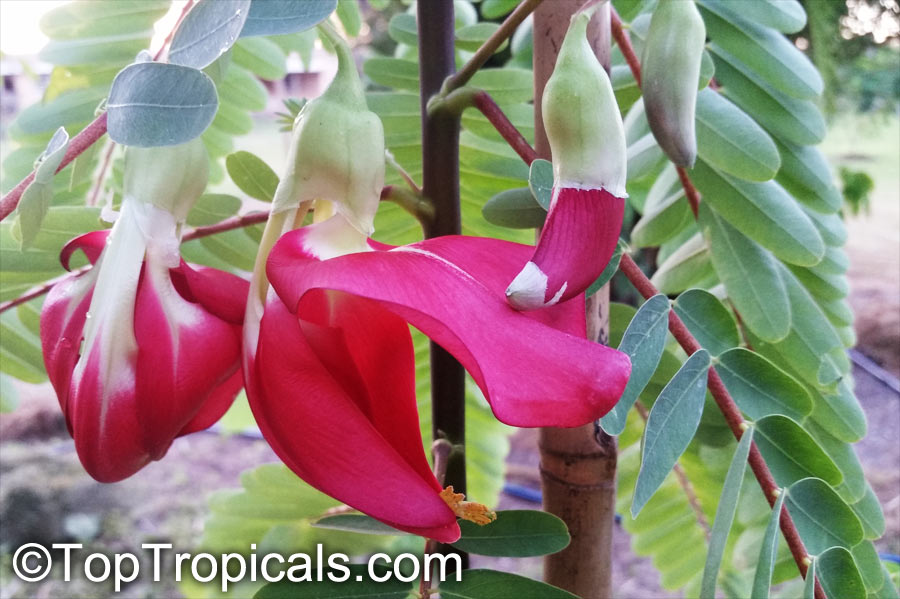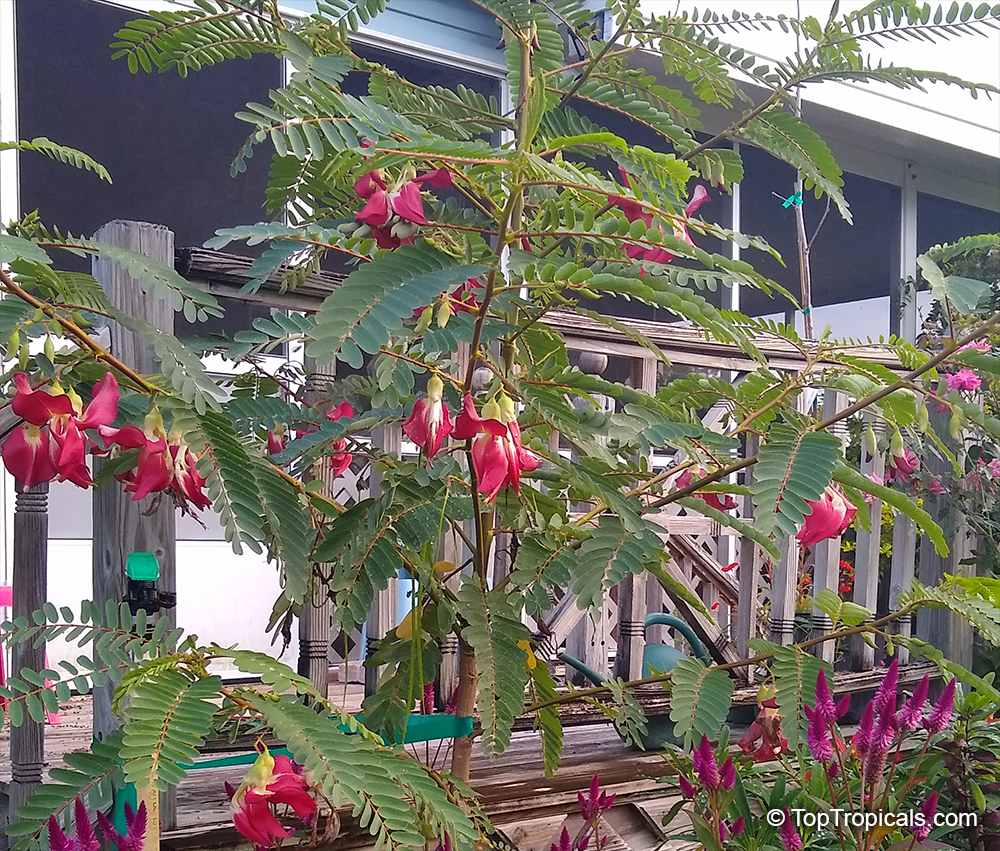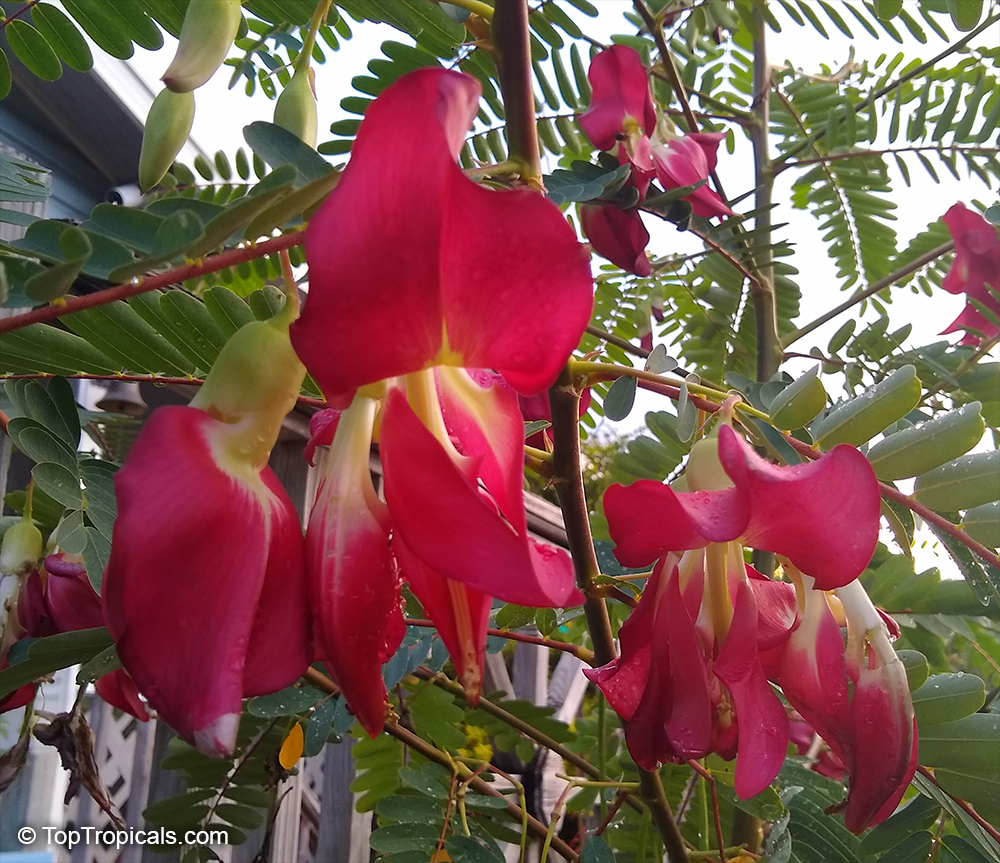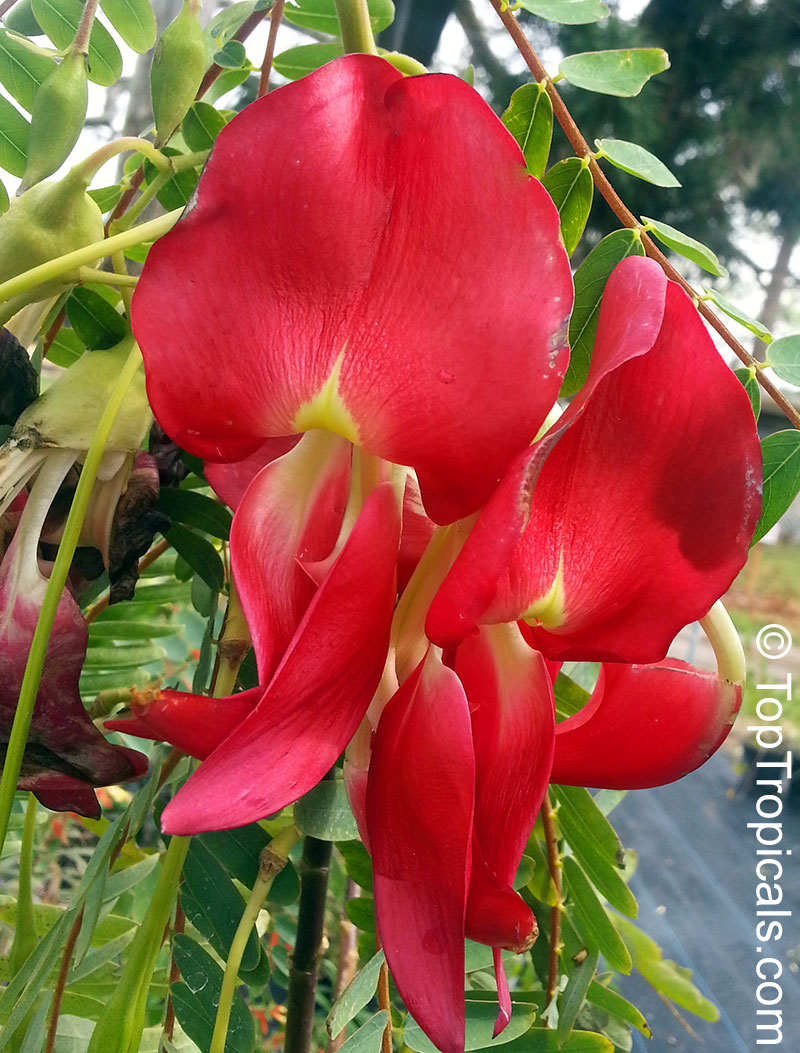Sesbania grandiflora (Hummingbird Tree)
Top Tropicals Plant Encyclopedia
Botanical names: Sesbania grandiflora, Agati grandiflora
Common names: Hummingbird Tree, Butterfly Tree, Agati
Family: Fabaceae
Subfamily: Faboideae
Origin: Asia and Australia











This small ornamental tree with a straight trunk produces a mass of large, 3-4" white flowers resembling little birds. Its lower branches create a floral canopy from November to June. Tolerates flooding. The flower is large and distinctively curved. Vertical pods, located near the flowers, can contain up to 20 seeds. The tender leaves, green fruit, and flowers are eaten alone as a vegetable or mixed into curries or salads. Flowers may be dipped in batter and fried in butter. Tender portions serve as cattle fodder. Ripe pods apparently are not eaten. The inner bark can serve as fiber and the white, soft wood not too durable, can be used for cork. The wood is used, like bamboo, in Asian construction. The tree is grown as an ornamental shade tree, and for reforestation. Bark, leaves, gums, and flowers are considered medicinal. In Java, the tree is extensively used as a pulp source. A gum resembling kino (called katurai), fresh when red, nearly black after exposure, exudes from wounds. This astringent gum is partially soluble in water and in alcohol, but applied to fishing cord, it makes it more durable. Pepper vines (Piper nigrum) are sometimes grown on and in the shade of the agati. Dried and powdered bark is used as a cosmetic in Java. An aqueous extract of bark is said to be toxic to cockroaches.
Similar plants: Sesbania grandiflora (Hummingbird Tree)
Recommended Fertilizer: SUNSHINE Megaflor - Bloom Nutrition Booster
Last one
Recommended Fertilizer: SUNSHINE Megaflor - Bloom Nutrition Booster
